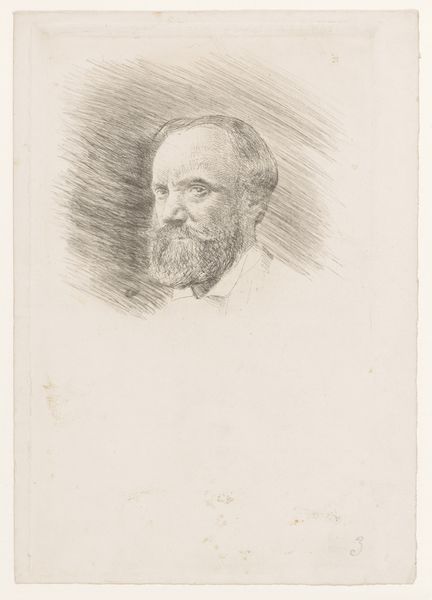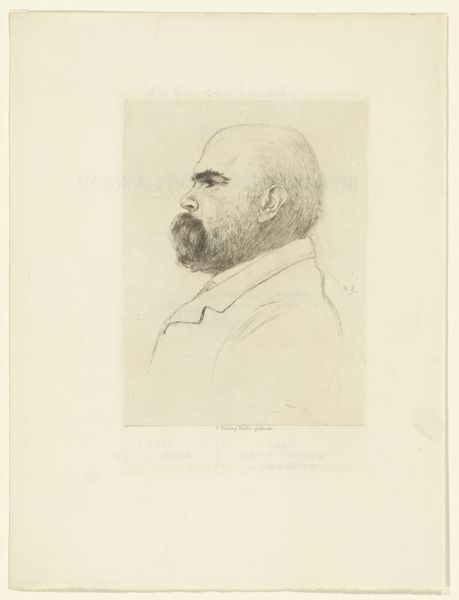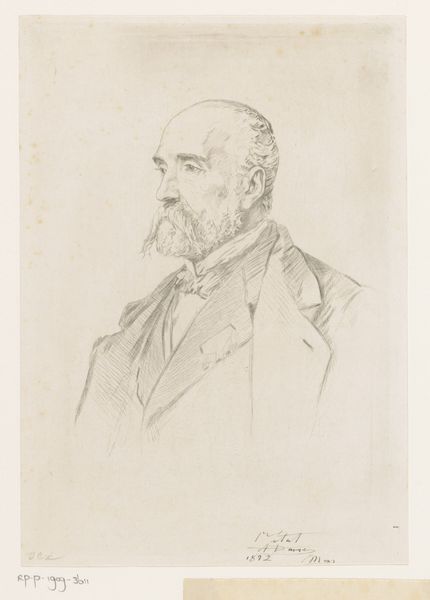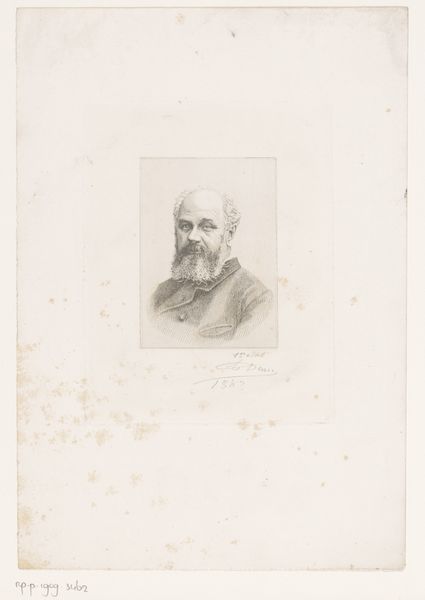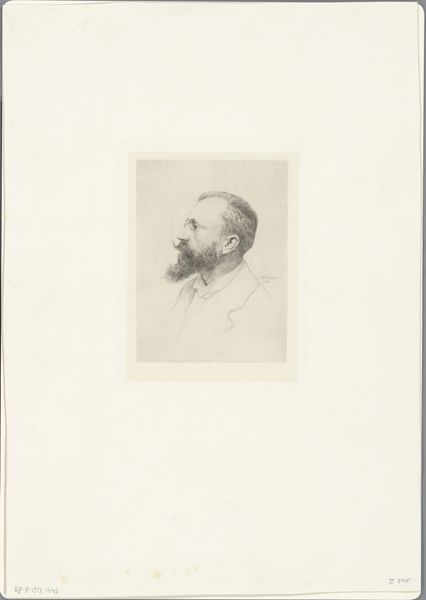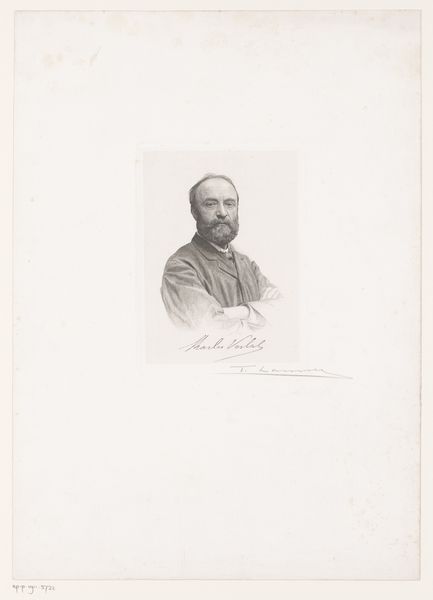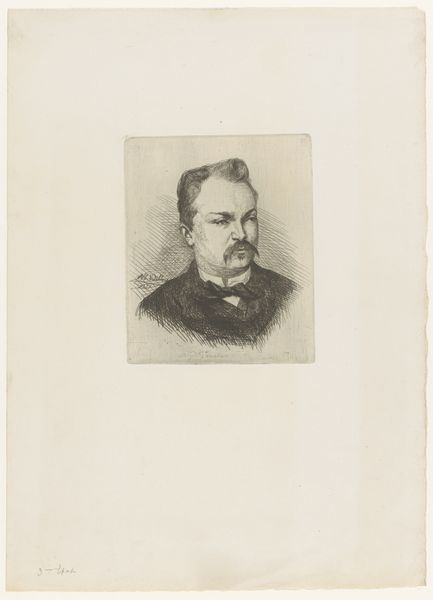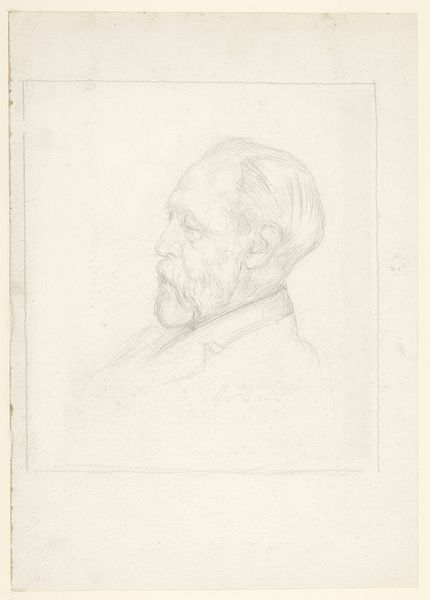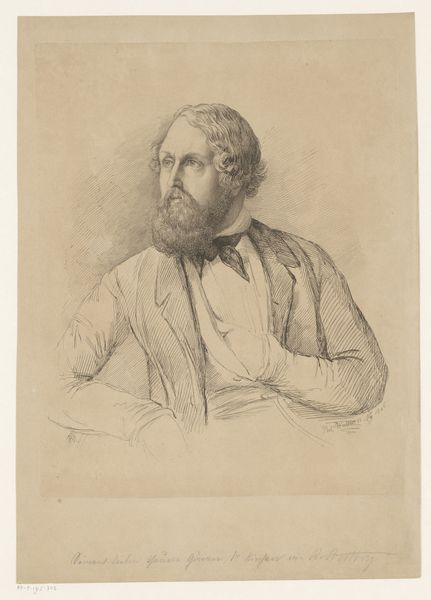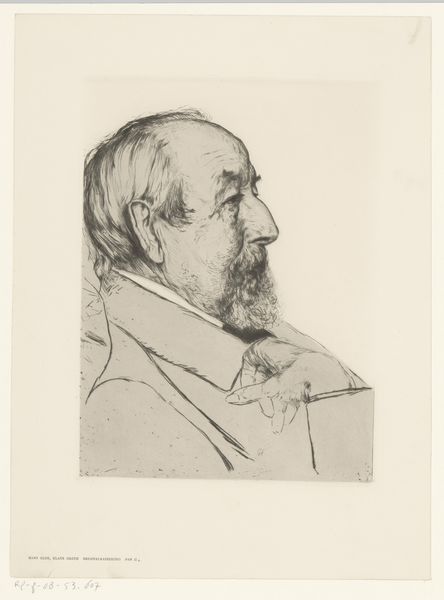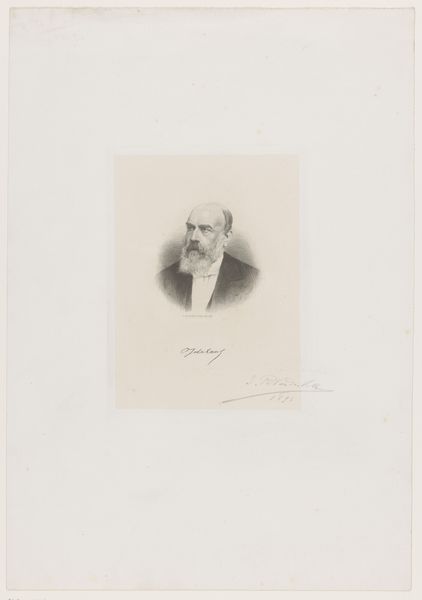![Self-Portrait [recto] by William E. Winner](/_next/image?url=https%3A%2F%2Fd2w8kbdekdi1gv.cloudfront.net%2FeyJidWNrZXQiOiAiYXJ0ZXJhLWltYWdlcy1idWNrZXQiLCAia2V5IjogImFydHdvcmtzL2MyOWM4NmY4LTk2ZDYtNGZkNS1iMjFjLTkwNjhlYWEwMmY3OS9jMjljODZmOC05NmQ2LTRmZDUtYjIxYy05MDY4ZWFhMDJmNzlfZnVsbC5qcGciLCAiZWRpdHMiOiB7InJlc2l6ZSI6IHsid2lkdGgiOiAxOTIwLCAiaGVpZ2h0IjogMTkyMCwgImZpdCI6ICJpbnNpZGUifX19&w=3840&q=75)
drawing, pencil
#
portrait
#
drawing
#
self-portrait
#
pencil drawing
#
pencil
#
academic-art
#
realism
Dimensions: image (irregular): 24.13 × 10.8 cm (9 1/2 × 4 1/4 in.) sheet: 33.02 × 26.35 cm (13 × 10 3/8 in.)
Copyright: National Gallery of Art: CC0 1.0
Editor: This is "Self-Portrait," a pencil drawing by William E. Winner, from around 1880. I’m struck by the detail in the face and beard, but then how unfinished it feels overall. What do you see in this piece, looking at its formal qualities? Curator: The most immediately noticeable feature is indeed the contrast in finish. The face itself is rendered with a delicate network of hatched lines, demonstrating a mastery of tonal variation. However, observe the upper portion of the sheet: there's an almost ethereal, indistinct sketch present there, completely divergent in its approach. Editor: It’s like two different drawings coexisting on the same plane! Is there a formal reason for this? Is it unfinished? Curator: The question of "finish" is compelling here. One could argue that the artist is intentionally playing with the concept of completion. Notice how the self-portrait's gaze is directed outward, engaging the viewer directly, while the upper sketch appears withdrawn, existing in a more private, exploratory realm. It creates a dialogue between the representational and the abstract, the seen and the unseen. Consider also the deliberate placement of the face lower on the page: this asymmetry contributes to the overall dynamic. Editor: So, it's not just a drawing of a man, but also a study in contrast, about the process of seeing and the different levels of representation? Curator: Precisely. We see not merely a portrait, but a commentary on portraiture, a meditation on the very act of artistic creation. Editor: I'm beginning to see how even a seemingly simple drawing can hold so many layers of meaning within its composition. Thanks! Curator: Indeed! Attending to those formal decisions is the key.
Comments
No comments
Be the first to comment and join the conversation on the ultimate creative platform.
